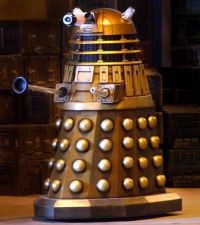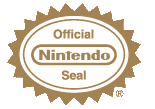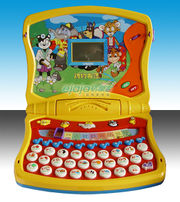User:Skinfan13/Upsilon Sigma Sigma/Collaboration/March2010collab
| This page is an archive. The contents have been moved from another page for reference purposes only, and should be preserved in their current form. Discussion or voting on this page is not current. Any additions you make will probably not be read. |
“Wii think you suck!!”
– Nintendo on their competitors
Nintendo Co., Ltd. (任天堂株式会社 Nintendō Kabushiki Gaisha) is a Japanese corporation best known for pumping out classic video games, revolutionizing the gaming industry, and whoring Mario, Zelda, and Wii. Founded in 1889 by Japanese entrepreneur Fusajiro Yamauchi, they originally made trading cards for little Japanese kids called Poketto Monsutā to compete with American baseball cards. By 1963, they had experimented with other business ventures, such as the Nintendo Cab Company, the ill-fated Nintendo Love Hotel.[1], and the Godzilla franchise.
By the 1970's, Nintendo had developed into a video gaming corporation, becoming Japan's 3rd most influential and honorable company after the anime and hentai industries, propelling the video game industry to the top of the Japanese economy. It has also been one of the most valuable, with a net value of 85,000,000,000 yen (approximately $82.46 USD), and some might even say they have become somewhat famous worldwide.
History
Card Company (1889-1948)
Nintendo's origins can be traced all the way back to the year 1889. Fusajiro Yamauchi was the Secretary of Entertainment Emperor of Japan. With the threat of civil war looming on the horizon, the Emperor in all of his greatness and majesty called upon Yamauchison to create a distraction that would keep the people's minds off of rebelling against the Emperor and on more trivial matters. Thus Yamauchi and the Emperor founded the Nintendo Playing Card Company Limited. Their first product was intended as a double whammy: Pokemon cards would be a worthy competitor to American baseball cards, as well as something to distract the people of Japan from all of the abuses the Emperor was committing against them. Such abuses included the weekly reading of various religious texts in town squares, the flogging of people who yawned during the reading of various religious texts in town squares, and the execution of people who questioned the wisdom of reading these various religious texts in town squares. Naturally, the people played with their new Pokemon cards during these readings and they soon forgot about the abuse. As Japan continued on its meteoric and glorious rise to prominence in the world, Pokemon continued to help Nintendo grow as a company as well. It was said that when the Treaty of Portsmouth was signed, the Japanese gave the Russians a starter deck of Pokemon cards as a symbol of good-will following the Russo-Japanese War of 1905.
Godzilla (1953-1956)
For a few years in the 1950's Nintendo created an entire product line of fire-breathing monster films, wind-up toys, memorabilia, clothing, and monster-themed nightclubs. Their signature symbol, a 200-foot tall lizardly looking creature named Godzilla, symbolized the cowardly destruction of Japanese properties by dishonorable cowardly forces. These forces came from the sea, which is where Godzilla was supposedly "born" in the Nintendo story break-out. The franchise carried Nintendo for several years, until competitors began to create their own lines of giant insect/huge bird monster products. The Godzilla monopoly collapsed, but Nintendo had squirreled away enough profit to fund their next venture.
New Ventures (1956-1975)

In 1956, the CEO of Nintendo, Hiroshi Yamauchi, went to America to get inspiration for new business ideas. First, he went to the United States Playing Card Company, the largest card manufacturer in the country, where he witnessed the creation of many different kinds of cheap paper playing cards. It was then he realized that simply making only Pokemon cards severely limited Nintendo's business opportunities. With this in mind, he got Disney to give him access to their characters, which he used generously to help boost sales. This venture was short-lived, however, due to the fact that trying to force-feed the world's youth pictures of Donald Duck bowing to the Emperor of Japan and Mickey Mouse training Minnie in the ways of the Geisha didn't actually enchant the children, as intended, but just gave them Disney-themed nightmares. Always a man to look forward, Yamauchi renamed Nintendo Playing Card Limited to Nintendo Company, UnLimited to symbolize their willingness to try anything at least once. It was also at this time that Nintendo dusted off the playbook and started to create arcade video games.
Electronic Era (1975-present)
By 1975, Nintendo started developing the product that would eventually define them as a company: video games. No one is quite sure what the first arcade game Nintendo developed was, nor how it was played, but what is certain is that it sucked. We know this because no one remembers it. Nintendo also started developing its Color TV Game consoles at this time, along with a line of simple games, like tennis. Also during this time, they hired Shigeru Miyamoto, who would later take over the company. His rise to prominence was most evident with his creation of the Donkey Kong arcade game, which features such recognizable characters as Mario, Donkey Kong, Princess Peach, and Barrel #2.
In 1980, they released the Game & Watch handheld series, the world's first handheld gaming system. The series was very successful worldwide, despite the "revolutionary" graphics that it boasted.
Aside from early computer games, they made other "useful" devices like love testers. Love testers were developed to help Japanese teenagers see if they were compatible with each other or not. The process was all very technical, but it involved something to do with hooking wires up to ones genitals while applying a mild electric shock. Suffice to say it took the average Japanese teen four tries to realize that the product really didn't do anything besides shock one's testicles. The no refund policy Nintendo instated from the outset wasn't very popular with youth either.
The real successes started to pour in for Nintendo with the development of their Nintendo Entertainment System, affectionately known as the NES. This system is considered the platform that propelled video-gaming to the esteemed place it holds in our society today. When the NES first came on the market, kids who refused to play baseball in real life and instead played it on their TV were mercilessly beaten and taunted in school. Nowadays kids who are fit and play baseball outside are the outcasts, all thanks to Nintendo.
Modern Games and Consoles
Since the 1980's, Nintendo has been a leading developer and trendsetter in the video game industry. After kids became tired of the 8 bit graphics of the NES, Nintendo released what was essentially a 16 bit version of the NES, known by the very imaginative and creative name of Super NES. This console whipped the floor with the major competition, the inferior Sega Genesis, and set the standard for the next few years.
N64
The first Nintendo console with the power to support 3-D graphics, the 64-bit machine boasted many classics such as Super Mario 64 and Legend of Zelda: Ocarina of Time. It sold millions of units, and became instantly successful among the 90's generation of gamers. Unfortunately also at this time, corporate giant Square-Enix abandoned Nintendo for Sony's Playstation, which boasted better graphics and CD technology, to which Shigeru Miyamoto responded by quietly ordering the total destruction of the dishonorable and inferior company Sony. The honorable Japanese press quickly uncovered Nintendo's plan and their sales dropped to an all-time low 4.2 million consoles per week. Attention was quickly drawn away from the scandal, however, when Nintendo released a filler Mario game under the slogan, "Hey, look! Another Mario game!" Sales immediately climbed to all-time highs in the following weeks.
Game Cube
An example of a Nintendo advertisement for the Cube of Games is given below:
Wii
The Wii was touted by Nintendo as the most photo-realistic gaming system to date. They neglected to mention that the date they were referring to happened to be sometime in 1999 rather than 2007. With the Wii it was claimed, you could golf with Tiger Woods, "bowl" with Paris Hilton, and interrupt Taylor Swift's acceptance speeches all with just a movement of your wrist. The Wii, with its motion controllers, was touted as the first healthy video-gaming system, and it was said to have been designed with "Americans especially in mind." Studies have shown though that the wrist movements needed to play Wii games are about as calorie-burning as the act of eating. The hype created by Nintendo prior to the release of the Wii, however, was very real. The anticipation was brought to a fever-pitch when it was revealed that the Emperor was personally looking forward to playing "Wii Sports." With this game, players play sports such as baseball and tennis without having to go to all the trouble of actually joining a team. The photo-realistic quality and realism of Wii Sports was touted as a way for Japanese youth to increase self-esteem and make them feel like they are extremely good at sports. The unintended downside of this was their dreams being crushed upon trying these sports in real life. Ultimately though, the dishonorable prospect of flicking one's wrist slightly for hours on did not appeal to the honorable youths of Japan, and therefore, the product has suffered since release. The Emperor has since declared Wii Sports to be "Pretty boring" and sales of the game have plummeted to unthinkable and shameful levels.
The future of Nintendo
Many futuristic games and add-on features are in the works over at the Nintendo building, down the block from the Emperor's palace. The honorable Emperor eagerly awaits the much more interesting sequel to Wii Sports and monitors its progress from his windows. From documents smuggled out of the building in the empty samurai sword-holders of the dishonorable and despicable corporate spies of Sony, it is apparent that Nintendo plans to blow the competition away with its ingenious and perfect implementation of its superior motion-technology. An example that illustrates this is one game that hearkens back to the simple days of Nintendo tennis. The game comes with a real 2 ft. x 2 ft. blacktop on which the gamer stands. Through the ingenious use of Japanese motion technology, the gamer can feel like he/she is running on gravel and can even flirt with the simulated ballgirls and ballboys, all with the flick of a wrist. The game is actually called "Blow the Competition Away" interestingly enough.
Another product near completion (in the spirit of Nintendo's old habit to expand into multiple industries) is a deluxe portable silicon-based dog which pees, attacks strangers, licks various body parts of the owner, and humps the legs of worthy Japanese citizens. The dog is programmed to chase squirrels all the way up a tree and into their little nests before tearing them apart. Fun for the whole family! This product is eagerly awaited for by the honorable Japanese Prison guards who protect the Japanese population from the dishonorable Korean criminals that clog Japan's prisons.
There is another untitled game in development in which a building in Tokyo catches on fire. This fire is presented in a soothing, hygienic, and entertaining fashion in accordance with basic Japanese law regulating disaster-oriented video games. The main character (either the honorable fireman or the beautiful heroine) must rush through the falling rafters, melting steel, and arsonists attempting to either stop them or push them into the flames. This all in order to save the baby and princess trapped in the inferno. The funny plot-twist though? Well, when you get to the end you are given a choice of saving either the baby or the princess, but not both. Interestingly, when loyal subjects tested this game, it seems that the choice of who to save was almost always predetermined by the gender of the character chosen. Such are the ways of:
See Also
References







